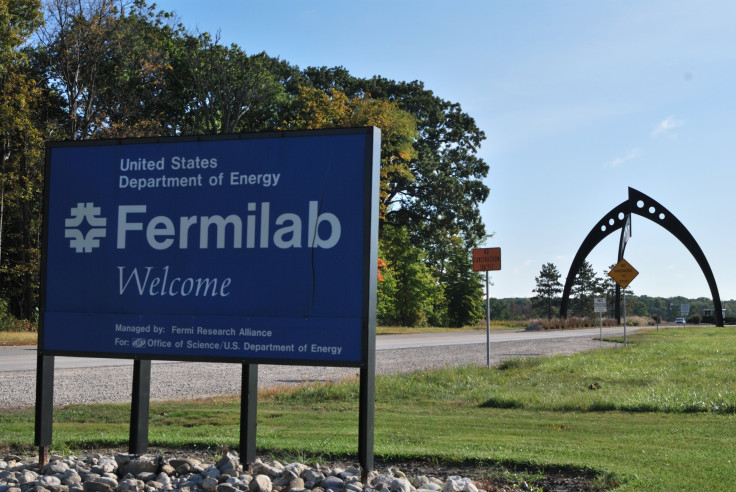Sterile Neutrino Theory Boosted After Fermilab Experiment Suggests New Elementary Particle

The Fermi National Accelerator Laboratory (Fermilab) outside Chicago has been conducting an experiment for 15 years which has finally thrown up some results that could shake the very foundation of physics, as we know it. It is not confirmed yet, or even demonstrated with a low enough chance of being wrong to be considered by scientists as almost fact, but a paper based on the lab’s Mini Booster Neutrino Experiment (MiniBooNE) instrument suggests the existence of a new type of elementary particle, possibly the hypothetical and elusive sterile neutrino.
Neutrinos are known to exist in three “flavors” or types — electron, muon and tau — and the sterile neutrino, if it exists would be a whole different kind. Unlike the other three, it doesn’t interact with matter at all, despite having mass. Given its unique properties, the theoretical particle is also considered a candidate — among several others — for being the source of dark matter, which makes up 27 percent of the universe’s total observable mass-energy and 85 percent of all observable mass.
The Fermilab experiment is only the second to support the possible existence of sterile neutrinos, which were first postulated after an experiment called the Liquid Scintillator Neutrino Detector in the Los Alamos National Laboratory (LSND) in New Mexico, conducted in the 1990s. Several other experiments since — such as those at the IceCube Observatory in Antarctica, the Neutrino Experiment for Oscillation at Short Baseline in South Korea, and even another experiment at Fermilab in collaboration with a laboratory in China — have repeatedly failed to come up with supporting data over the years.
The results from MiniBooNE have not yet been published in a peer-reviewed journal but a pre-press version of the paper was made available by researchers on the pre-print server arXiv. Titled “Observation of a Significant Excess of Electron-Like Events in the MiniBooNE Short-Baseline Neutrino Experiment,” the paper’s abstract says: “The MiniBooNE data are consistent in energy and magnitude with the excess of events reported by the LSND.”
It also says that by itself, the MiniBooNE data has a 4.8-sigma, and combined with the LSND data, the events detected in the two experiments that could suggest the existence of a yet-unknown particle have a 6.1- sigma. The first number comes close to the 5.0-sigma threshold that physicists typically look for before they take data seriously, because it implies a 1-in-3.5-million chance that the result was a fluke. The 6.1-sigma would mean the possibility of the result be a random fluctuation would be 1-in-500-million.
So, by itself, the MiniBooNE result is not really a discovery in of itself. And scientists, both those involved with the experiment and those who had nothing to do with it, are reacting with caution at the result it has thrown up. After all, the existence of sterile neutrinos has been suggested by only two experiments, both of which are based on the same method of detection (while the others use different methods of testing). And importantly, observations of light from the earliest observable times of the universe show the presence of only the three known neutrino flavors.
“It’s clear there’s something to be understood, and I certainly hope it’s a fourth neutrino,” Neal Weiner, a theoretical physicist at New York University, told Quanta magazine. “That said, this would be the first discovered particle beyond the Standard Model, so the threshold for the evidence is obviously very high.” For now, he said, “I am taking a slight wait-and-see approach.”
© Copyright IBTimes 2024. All rights reserved.





















